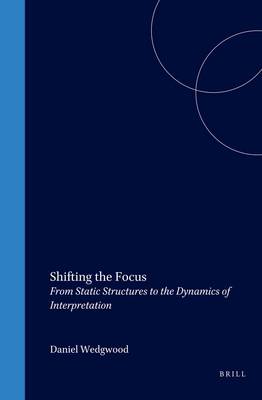
- Afhalen na 1 uur in een winkel met voorraad
- Gratis thuislevering in België vanaf € 30
- Ruim aanbod met 7 miljoen producten
- Afhalen na 1 uur in een winkel met voorraad
- Gratis thuislevering in België vanaf € 30
- Ruim aanbod met 7 miljoen producten
Zoeken
€ 244,45
+ 488 punten
Omschrijving
How direct is the mapping between linguistic constructions and their interpretations? Much less direct than we commonly assume, according to Daniel Wedgwood. Extending current ideas from frameworks like Relevance Theory and Dynamic Syntax, Wedgwood upholds a radical position on modelling linguistic competence: the idea of interfacing static syntactic and semantic representations must be abandoned in favour of models of the incremental construction of meaning during parsing - which may involve significant pragmatic enrichment. In illustration, Wedgwood presents a detailed study of a key meeting point of grammar and pragmatics: focus, in particular its syntactic expression in Hungarian. The result is a strikingly simple explanation of a complex set of syntactico-semantic phenomena, touching on information structure, negation, quantification and complex predication.
For its clear and bold theoretical argumentation and its novel analysis of some notorious data, this book will be of interest to all linguists, philosophers and computational linguists concerned with the relationships between syntax, semantics, pragmatics and information structure. This book features a broad theoretical perspective. It offers a coherent overall picture of syntax, semantics and pragmatics - and how they inter-relate. It combines a bold new approach with the insights of existing theory - thorough, novel analysis of linguistic phenomena that historically occupy an important place in the literature, as illustration of a carefully laid out theoretical position. It extends and integrates research from a variety of linguistic domains and frameworks. It also includes a comprehensive informal discussion as well as a formalised analysis.
For its clear and bold theoretical argumentation and its novel analysis of some notorious data, this book will be of interest to all linguists, philosophers and computational linguists concerned with the relationships between syntax, semantics, pragmatics and information structure. This book features a broad theoretical perspective. It offers a coherent overall picture of syntax, semantics and pragmatics - and how they inter-relate. It combines a bold new approach with the insights of existing theory - thorough, novel analysis of linguistic phenomena that historically occupy an important place in the literature, as illustration of a carefully laid out theoretical position. It extends and integrates research from a variety of linguistic domains and frameworks. It also includes a comprehensive informal discussion as well as a formalised analysis.
Specificaties
Betrokkenen
- Auteur(s):
- Uitgeverij:
Inhoud
- Aantal bladzijden:
- 328
- Taal:
- Engels
- Reeks:
- Reeksnummer:
- nr. 14
Eigenschappen
- Productcode (EAN):
- 9780080445779
- Verschijningsdatum:
- 1/09/2005
- Uitvoering:
- Hardcover
- Formaat:
- Genaaid
- Afmetingen:
- 158 mm x 229 mm
- Gewicht:
- 621 g

Alleen bij Standaard Boekhandel
+ 488 punten op je klantenkaart van Standaard Boekhandel
Beoordelingen
We publiceren alleen reviews die voldoen aan de voorwaarden voor reviews. Bekijk onze voorwaarden voor reviews.











